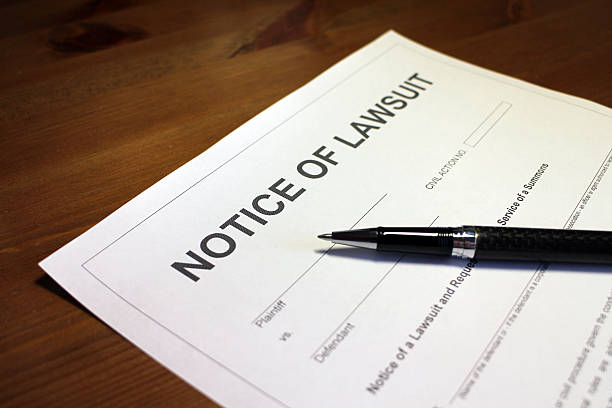As pivotal as it is pervasive, the notion of the ‘Bundle of Rights’ underlies every transaction, negotiation, and dispute involved in owning, selling, leasing, or investing in real estate. The essence of these rights outlines the numerous liberties and limits that come with property possession—from the right to use and control property to the inherent ability to exclude others or dispose of the asset at will.
Understanding this broad yet nuanced concept is indispensable for homeowners and potential investors. This exploration delves into the ‘Bundle of Rights’ fundamentals, their practical application in real estate scenarios, their impact on market dynamics, and potential future developments.
Table of Contents
- Basics of Bundle of Rights
- Applying Bundle of Rights
- Bundle of Rights & The Marketplace
- Innovation in Bundle of Rights
- Related Questions
Basics of Bundle of Rights
The Power Bundle: Understanding ‘Bundle of Rights’ in Real Estate
In the multifaceted world of real estate, one concept often drives the conversation, guiding both veteran investors and first-time homebuyers: the ‘bundle of rights.’ Complex yet critical, this concept is indispensable for anyone navigating the real estate landscape – a silent player making quite a loud impact.
Laying the Foundation
At its core, the ‘bundle of rights’ stands as a symbolic bundle holding the essential rights property owners possess. Those rights typically include the right of control, enjoyment, possession, exclusion, and disposition. Think of them as the building blocks of property ownership, an innovative genius in its design to bestow legal rights to property owners.
The Rightful Bundle
Let’s look closer at each other. Control allows you to use your property as you see fit within the parameters of the law. Enjoyment ensures no one can legally tamper with your peaceful use of the property. The right to possession means having physical control over your property. Exclusion grants you the authority to keep unauthorized individuals at bay, while disposition empowers you with the legal authority to sell, lease, or transfer ownership of your property.
Resounding Relevance
Across multiple industries, the ‘bundle of rights’ has gained tangible importance. Due to its far-reaching impact, it resonates with entrepreneurs, brokers, lawyers, and investors alike.
In real estate, these rights determine the depth and breadth of an owner’s control over their property. These rights are also transferable and divisible, creating a hotbed for innovation and forward-thinking strategies.
For instance, an owner could lease mineral rights to a mining company while retaining the right of possession and control. The astute investors, who understand this concept’s power, leverage these rights to generate maximum value from their properties.
These rights also drive the negotiations in property transactions, particularly in commercial real estate. Understanding this bundle can give negotiators critical insights, shaping the entire deal’s structure.
Paradigm Shift
The ‘bundle of rights’ brings a dynamic element to property ownership in an ever-evolving business landscape. It allows property owners to innovate, explore, and exploit different avenues for wealth creation.
Moreover, it offers legal protection to property owners, a safety net instilling confidence, and fostering more robust real estate transactions. An informed understanding of these rights enables seamless navigation of current market realities, an asset of immeasurable value in this ever-demanding industry.
In conclusion, it matters little whether you’re a novice investor or a seasoned real estate mogul; comprehending the ‘bundle of rights’ transcends labels – it’s about wisdom at its finest. So dive in, grasp this bundle’s power, and watch your real estate ventures soar to unprecedented heights.

Applying Bundle of Rights
Diving deeper into the sphere where a bundle of rights and real estate intertwine, let’s explore a few contexts that might not be as familiar. To be an innovator and navigator in this ever-evolving marketplace, it’s crucial to understand how a bundle of rights manifests across disparate sectors within real estate.
Bundle of rights comes into play extensively in residential real estate. When a prospective homeowner buys a property, they buy far more than a physical structure; they secure the rights to use, control, and enjoy the property within legal boundaries.
From an entrepreneurial perspective, these rights heavily influence the housing market’s dynamics. However, they can be limited by HOA restrictions, zoning laws, and environmental regulations, transforming how a homeowner might optimize the use of their property.
Commercial real estate ownership uniquely involves the bundle of rights as well. Commercial owners can impose leases, collect rent as an income source, and define the parameters under which a tenant uses a property.
They remain protected by legal structures in place to enforce lease obligations. As part of the control concept, they can even navigate redevelopment possibilities for commercial properties to enhance their business utility and overall market value.
In the agricultural real estate market, the bundle of rights takes on a distinct shade. According to the right of disposition, the property owner can sell the mineral or water rights separately from the land. This allows energy and agribusiness companies to enter agreements with landowners to extract resources from the ground.
The real estate development sector perfectly showcases the power of the bundle of rights at work in an innovative environment. Developers perceive property not just as it is, but what it could become by applying legal rights, and creating wealth and jobs. Yet, they must navigate many regulations that can impact their right to control, dispose of, or even exclude others from the property.
Within real estate financing, the bundle of rights forms the backbone of securing loans and credits. Lenders rely on the right of disposition as a safety net, taking on a mortgage lien, which they can enforce if debt obligations are not met.
Amid this vast and interconnected real estate ecosystem, understanding the bundle of rights and their application is a potent tool for innovative entrepreneur to strengthen their foothold in the marketplace. Fully unveiling its power can be transformative, impacting everything from first-time home purchases to commercial structure investments, from lending decisions to agricultural prospects.
Staying on top of how these rights apply in varying real estate contexts is much more than just understanding legal definitions; it’s about seeing opportunities, devising strategies, and driving innovation at the intersection of law and commerce.
Entrepreneurial solutions can emerge From these insights, capable of filling market gaps and contributing to economic growth. There’s no shortcut or bypassing the importance of the bundle of rights in the grand game of real estate.

Bundle of Rights & The Marketplace
To further delve into the impact of the bundle of rights in the real estate marketplace, it stands to reason that these rights extend across residential, commercial, and agricultural real estate, as well as real estate development and financing. Each sector presents unique opportunities and challenges in applying and integrating the bundle of rights.
In residential real estate, the bundle of rights significantly shapes housing market dynamics. Buyers and sellers can negotiate prices based on these legal rights.
However, the rights are not absolute and often come with limitations. For instance, homeowner associations and local regulations can restrict some residential properties’ use and enjoyment rights.
For commercial real estate, the bundle of rights becomes even more nuanced. Here, businesses can generate income through rents and leases, thanks to the right of control and disposition.
As a landlord, the right of exclusion provides the legal means to enforce lease obligations, creating accountability within the market. Redesigning and redeveloping a property can also come into play, offering opportunities for innovation and wealth generation.
Navigating the agricultural real estate sector broadens the perspective on the bundle of rights, as it often involves separating mineral and water rights from land ownership. This can create opportunities for energy and agribusiness companies looking to exploit these properties. It’s essential to remember that understanding these rights ensures a well-informed investment approach.
In real estate development, the bundle of rights serves as a compass to anticipate a property’s potential through the lens of legal rights. Developers become navigators through a complex landscape of zoning regulations, environmental rules, and other compliance issues, transforming potential legal hurdles into navigable pathways.
The bundle of rights also plays a massive role in real estate financing. The right of disposition enables property owners to secure loans and credits. Lenders, in turn, rely on these rights as collateral to minimize risk and protect their investment. The transformative impact of understanding this principle shouldn’t be underrated.
Finally, we can’t ignore the entrepreneurially spirited individuals and the indefatigable game-changers. They’re busy leveraging knowledge of the bundle of rights, creating novel strategies and innovations at the intersection of law and commerce. By integrating the bundle of rights into business models, they drive market dynamism, fostering growth in real estate and the broader economy.
In conclusion, the bundle of rights is intricately woven into the fabric of the real estate ecosystem. The ability to manipulate, understand, and directly tap into these rights allows for a dynamic market movement, encouraging entrepreneurial solutions and fostering economic growth.

Innovation in Bundle of Rights
The bundle of rights concept is a cornerstone of the real estate industry. By unpacking this concept further, beyond the conventional wisdom of usage, one can unearth incredible opportunities ripe for innovative moves.
Consider the concept of Fractional Ownership, an excellent demonstration of the real estate sector’s ingenuityBusinesses create enticing investment opportunities by splitting a property’s bundle of rights into pares.
For example, consider a beachfront property where the right to use can be split seasonally among multiple investors: time-shared vacation homes. These innovatively leverage the bundle of rights to create lucrative ventures.
Further, co-working and co-living spaces also present resourceful utilization of the ‘bundle of rights.’ They entail flexible leases for workspaces or strategic residential arrangements, allowing effective exploitation of possession and use rights without acquiring full ownership.
It’s an operational model embraced by innovative companies like WeWork and a rapidly growing sector in the post-pandemic world.
PropTech startups are developing intelligent access control technologies by capitalizing on the excludability aspect. Think of SmartLocks that facilitate remote e, secure, and controlled access to property, ideal for rental spaces or shared housing environments. It’s leveraging technology to maximize the ‘Right of Exclusion.’
For commercial real estate, it’s strategic to unbundle rights that can be separately marketed. Selling air rights atop buildings, especially in bustling urban areas, to developers for vertical extensions, TV antennas, or even billboards is one such avenue. It’s an ingenious method to optimize a property’s earning potential.
The realm of agricultural real estate witnesses an exciting development – the separation of mineral and water rights from surface rights. It opens avenues for agribusinesses, renewable energy companies, and even fracking operations without engaging with the land’s surface usage.
In the face of daunting regulatory landscapes, innovation shines through. Using legal rights to perceive a property’s potential, developers critically address zoning laws to strategize projects. Beyond the mere risk assessment, it unveils lucrative redevelopment opportunities and aids in crafting winning project proposals.
In real estate financing, the right to disposition secures loans and other lines of credit. The capability of leveraging this right has a transformative impact on the real estate ecosystem. It opens up capital flows, supporting the sector’s growth and facilitating seamless dealings.
In essence, the marriage of law and commerce at the confluence of the bundle of rights concept provides many strategic maneuvering opportunities. It encourages entrepreneurial solutions, fostering economic growth by enabling the development of innovative services and products in the real estate sector.
Final word: The bundle of rights is not a static notion. It’s an adaptable and flexible framework that, with a dash of creativity and business acumen, can open up unseen avenues of wealth and growth.
The real estate sector has barely scratched the surface of what it can accomplish with this powerful tool. Developers, investors, and entrepreneurs must embrace this dynamism to unlock the bundle of rights’ true potential.
Reflecting on the end, deciphering the ‘Bundle of Rights’ concept is far more than an academic exercise—it is a veritable compass in the complex, evolving landscapes of real estate. As technology and regulations redefine boundaries, the interpretation and application of these rights will undeniably evolve.
Staying ahead of these shifts helps property owners protect their assets and investors make well-informed decisions, but they also play pivotal roles in shaping market dynamics.
In this understanding, the crux of real estate ownership and investment lies in steering us through the challenges and opportunities that characterize the property industry.
Real Estate Crunch gives you real property and real estate information and advice. We offer a free monthly newsletter; you can sign up for our newsletter by clicking here.
We also have a weekly podcast called “Real Estate Crunch,” on all major podcast platforms. Listen to our podcast by clicking here.
Follow us on our social media platforms – Facebook and Instagram.
Related Questions
Prefab Vs. Modular Homes Explained
Prefab housing is prefabricated housing built in a factory-controlled setting and assembled on-site. Modular homes are also made in a factory study and assembled on-site, except modular homes usually refer to homes where more complete sections are built on-site.
By clicking here, you can read more about Prefab Vs. Modular Homes Explained.
3 Tiny Home Alternatives – Zennihome, Boxabl & Vantem
Many people continue to like the tiny homes they see on the market. We also like small homes but appreciate many alternatives for the tiny home trend. Some of our favorite companies doing fantastic things and alternatives to tiny homes are Zennihome, Boxable, and Vantem Systems.
By clicking here, you can read more about 3 Tiny Home Alternatives – Zennihome, Boxabl & Vantem.
ZenniHome – An Alternative To A Tiny Home
ZenniHome is an alternative to the tiny home trend. We love how they use robotics and smart technology to make use of every inch of the home. We also love their sleek modern designs and modern interiors. We see the ZenniHome as an alternative to many of the tiny houses that are on the market.
By clicking here, you can read more about ZenniHome – An Alternative To A Tiny Home.


